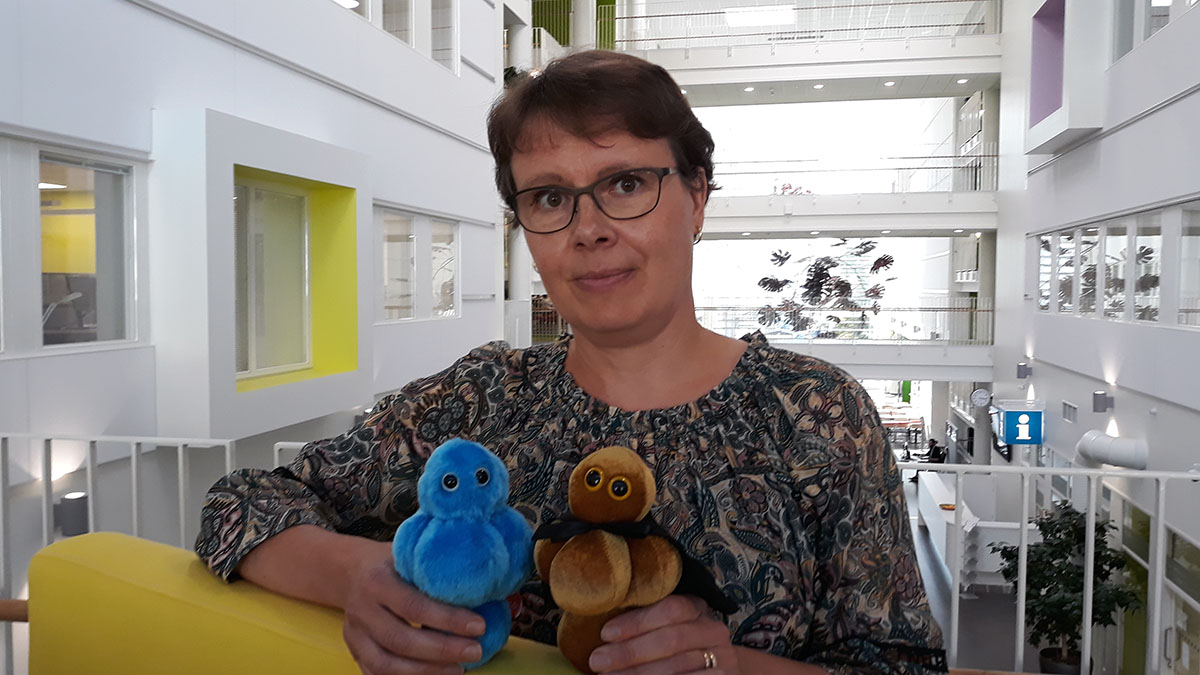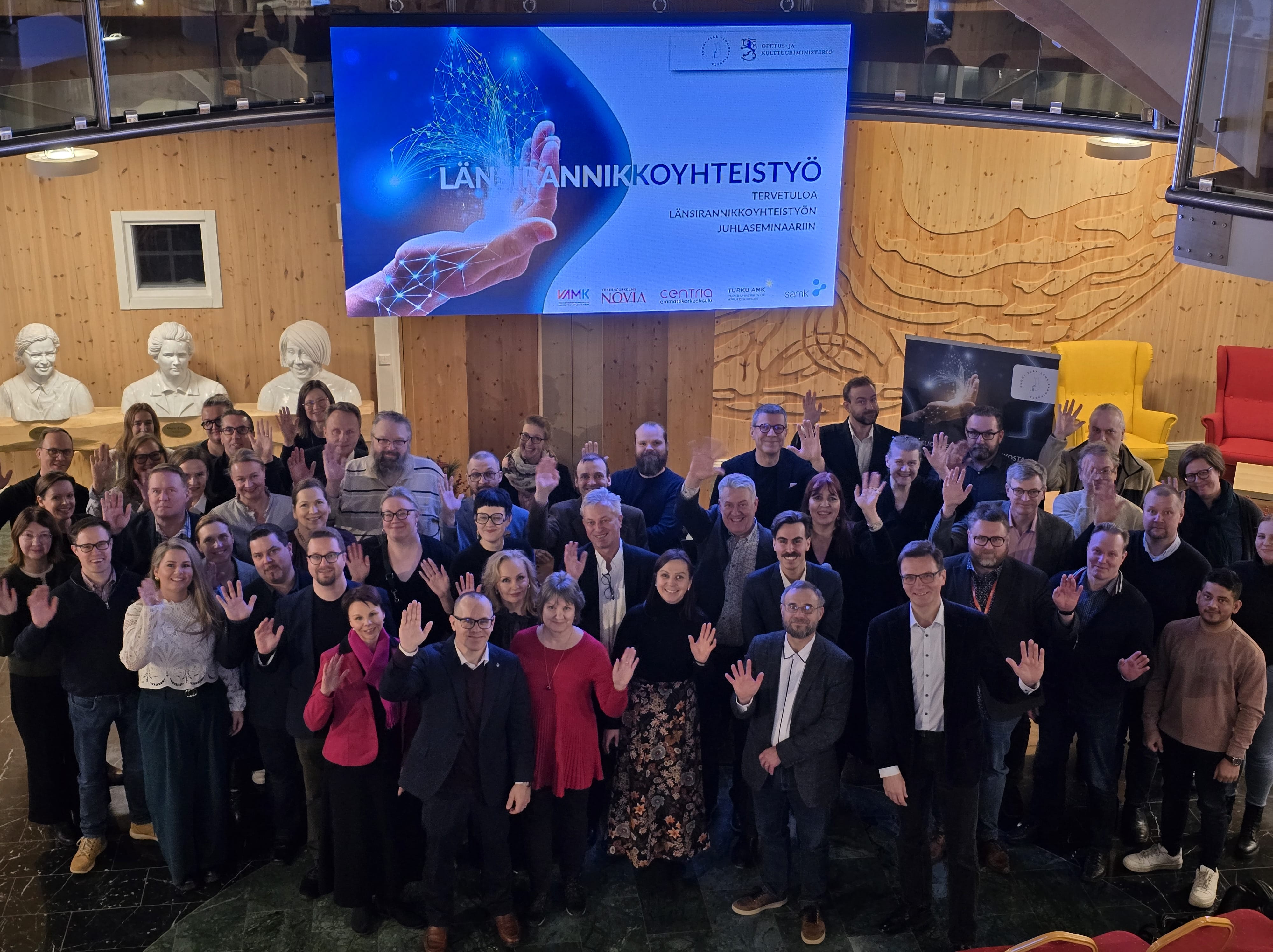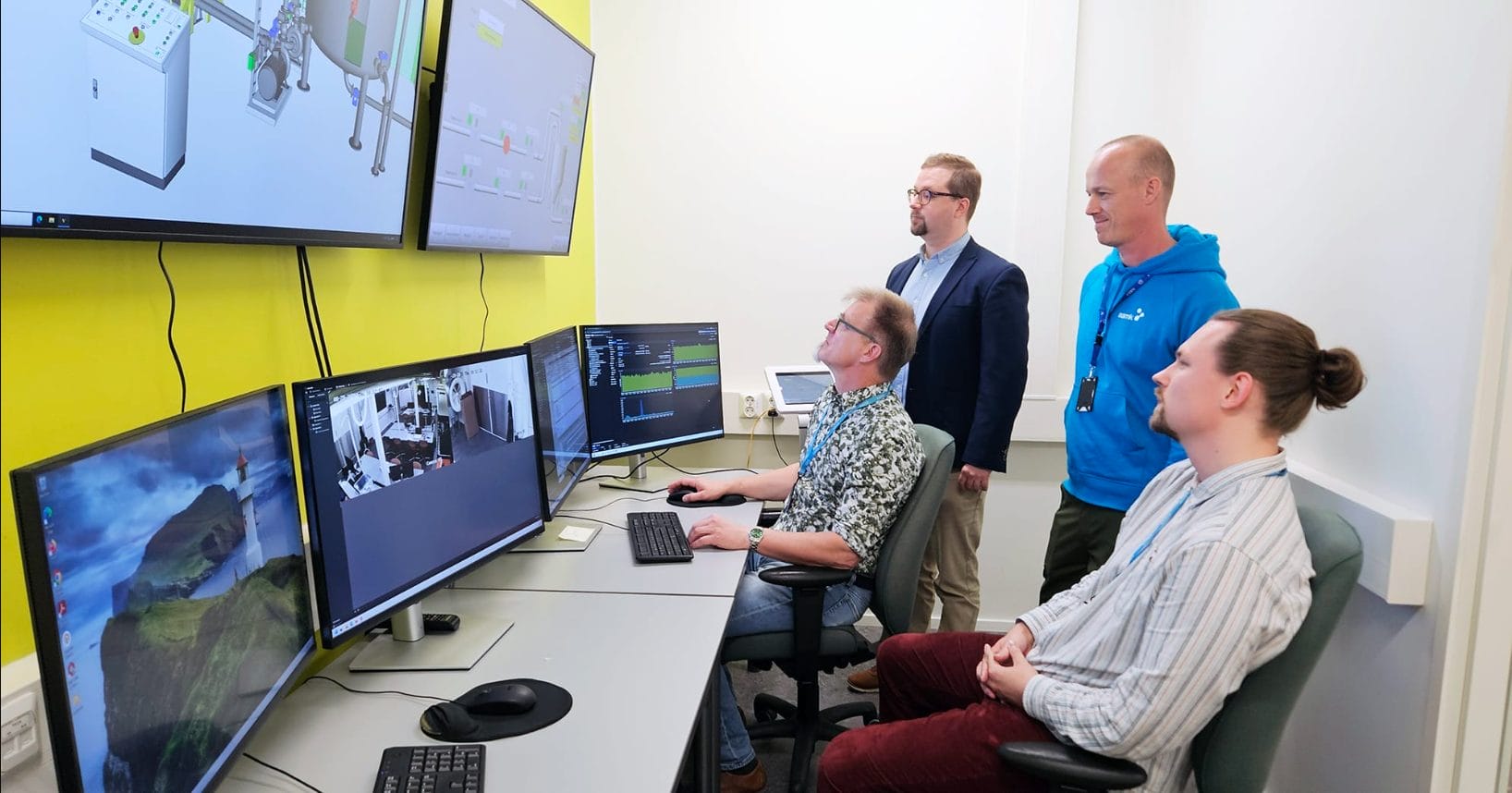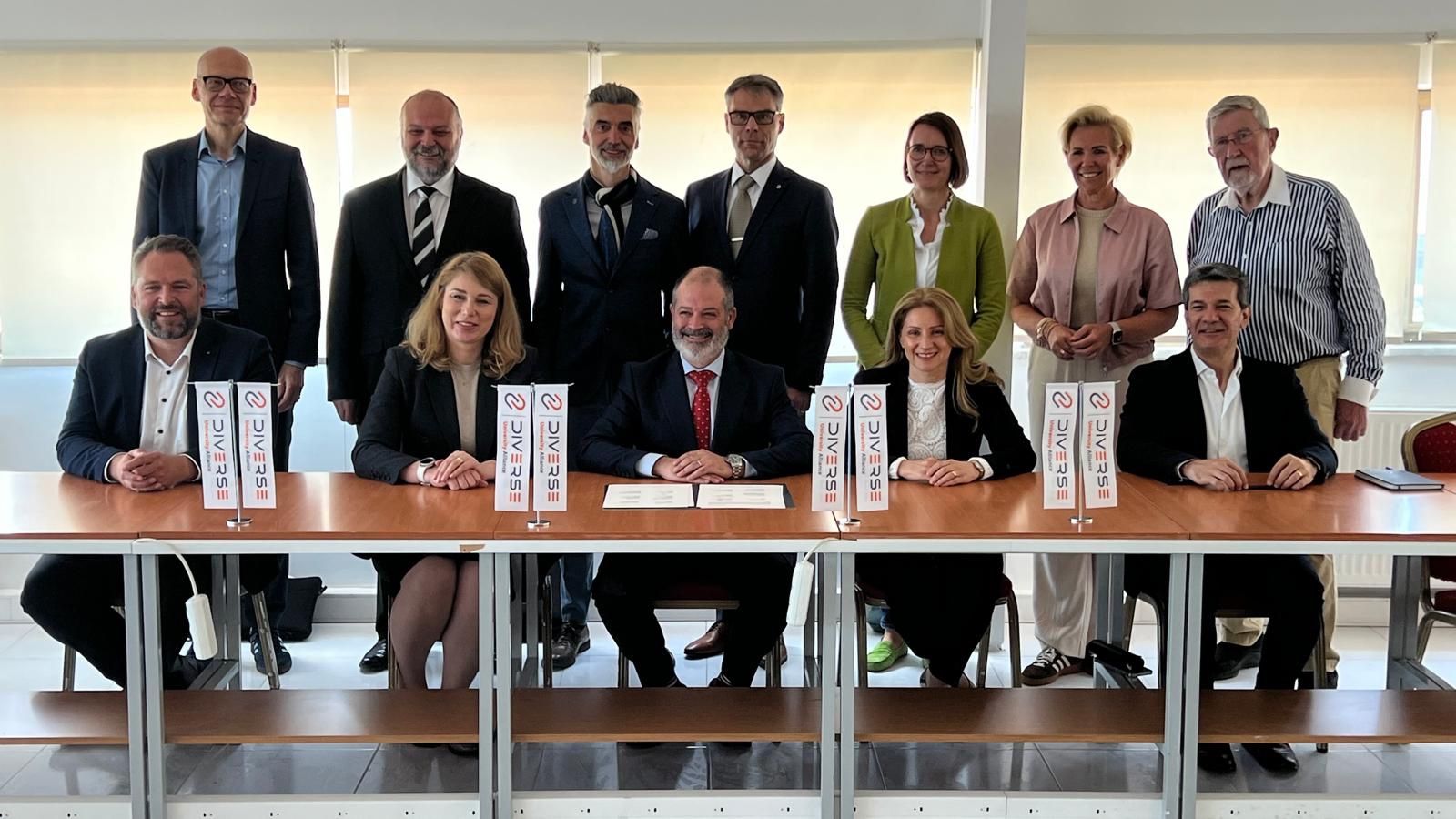Human health is the general drift of Merja Ahonen’s work
Closest to Merja Ahonen’s heart is human health. The perspective on this is that of a natural scientist interested in microbes. In early autumn, SAMK awarded her the prize of the Project Agent of the year.

As a researcher, Merja Ahonen enjoys being with bugs – as long as they don’t run wild. At front, a thousand folded conceptual model of a Staphylococcus aureus bacterium (on the left) and a methicillin-resistant Staphylococcus aureus bacterium (MRSA, on the right).
– While listening to the reasoning, I felt like I received a prize for life’s work, senior researcher Ahonen laughs.
In recent years, a broad description of Ahonen’s work has included both indoor and outdoor environments: cleanliness and water, in more detail indoor hygiene, potable water and environmental protection. Many projects have studied and informed of these subjects. In addition, Ahonen teaches i.a. microbiology and purification of raw water.
Indoor hygiene
Regarding hours, the main part of Ahonen’s work time passes now with indoor hygiene. The subject has been studied at SAMK and companies’ businesses have been developed in collaboration with SAMK and Turku University School of Economic since 2012. From the HYGTECH project (Solutions to Manage Hygiene in Indoor Environment) the journey has continued stage by stage to the present IHMEC project in Saudi Arabia.
– We have been able to convince the companies that with our knowledge and contacts we are able to help them.
Ahonen tells that a part of the companies has been involved already from the first project. Finnish companies’ HygTech Alliance, founded along the projects, shows that interest in the topic is wider than just the research circles. A few of the companies had already earlier started the parallel work independently.
Recovering the Baltic Sea
Ahonen’s work description has expanded to cover also outdoor environment. Ahonen coordinated the Waterchain project at Central Baltic countries, which worked for recovering the Baltic Sea. The toolkit has been published in five languages.
– When the financier appreciates the work, you can be satisfied yourself.
The Baltic Sea project was huge also because nine organizations and about 40 people from four countries were involved. The present CANEMURE project continues the work to protect the environment aiming towards carbon neutral municipalities and regions.
– It’s nice to work with something that has a broader significance. Sometimes the meaning of your own work makes you think, but even mighty oaks from little acorns grow. Therefore, also the small actions count.
What is project work?
– First you must have an idea. Or actually, a need, because you can seldom start researching something just “because it’s fun”.
Then you need to think about a suitable financier for the theme and partners both from Finland and abroad. Depending on the case, the partners are research organizations, companies, interest groups and other organizations. The application is worked with together, and if funding is granted, work to achieve the goals begins. Cooperation means exchanging emails and having meetings, individually you read, test and examine by what means research problems and project goals can be solved. Together the results are refined into the final form. Ahonen emphasizes that cooperation is not always easy or simple and does not always succeed.
– Communication is important to clarify the common goals and to maintain motivation, Ahonen says.
Project work does not happen in a research cubicle but in interaction. Even a natural scientist needs partners and must forward a message, e.g. to students, decision makers and other interest groups.
Merja Ahonen’s background lies in medical biochemistry. The doctoral thesis dealt with the role of vitamin D in development and progression of cancer. When the Nordic Water and Materials Institute WANDER merged with SAMK in 2013, she began working at SAMK.
– Working here is meaningful and interesting. Everything is linked with the human health.


